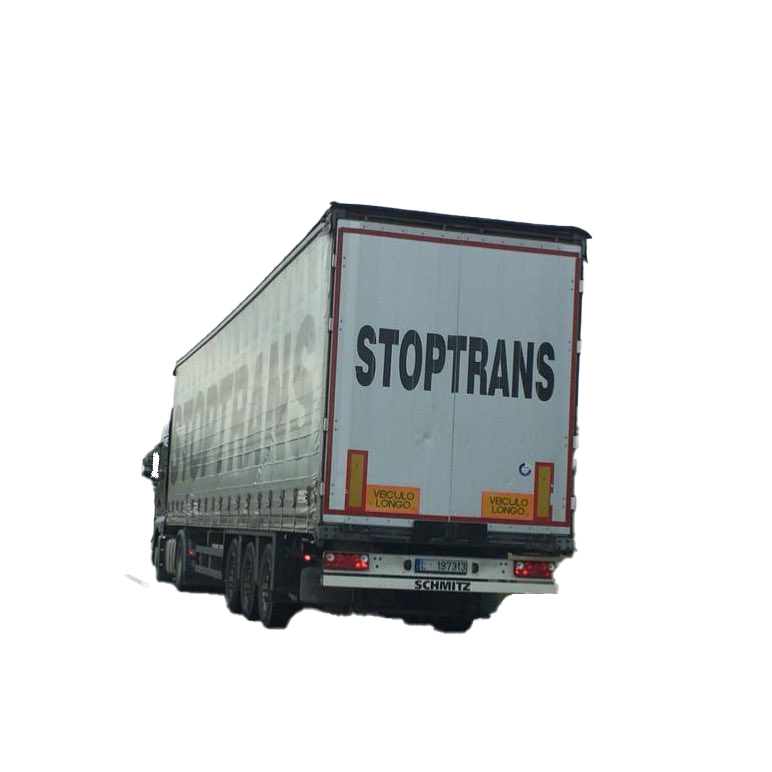Sunday Russell
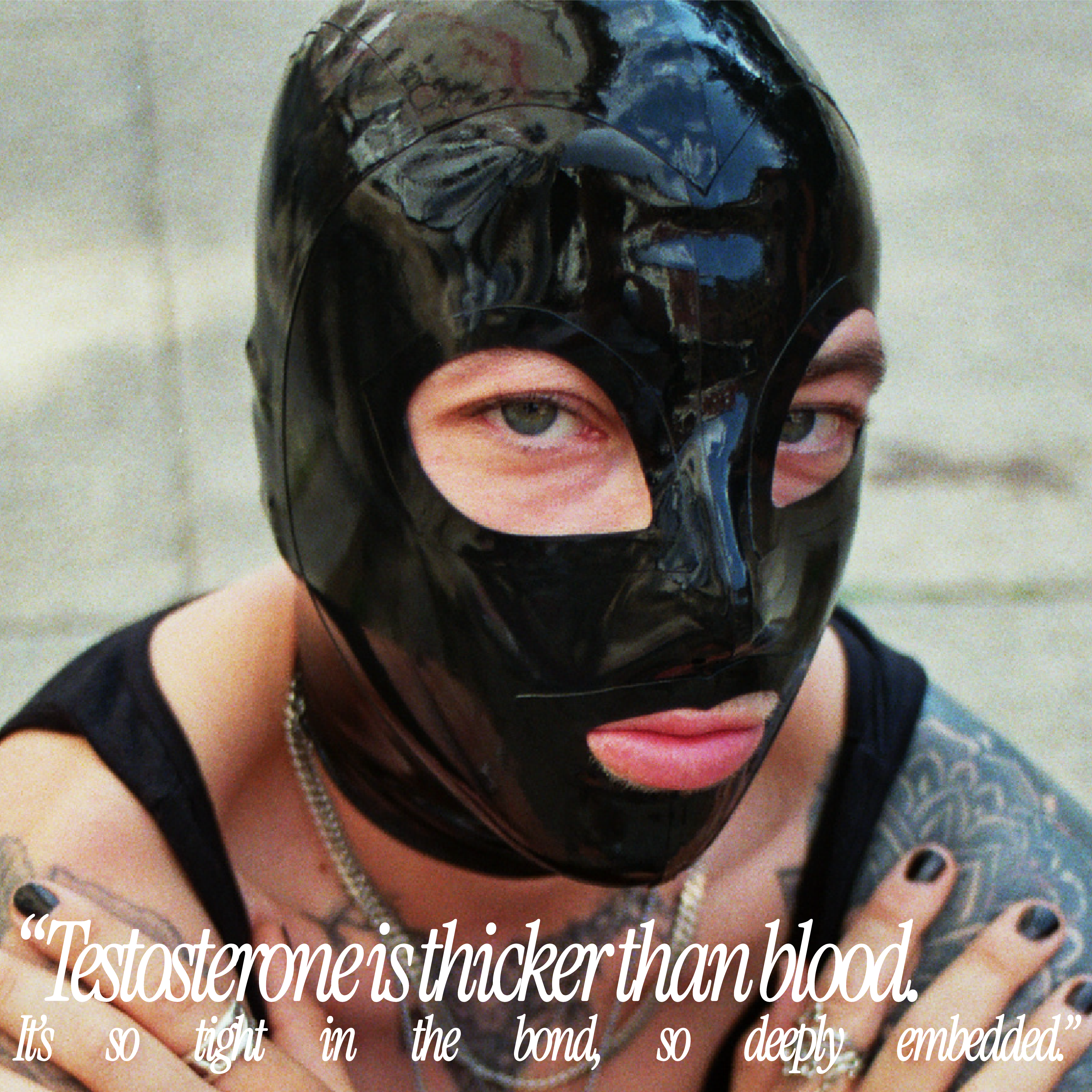
Testosterone is thicker than blood, estrogen as well. A lot of trans people don’t go to their families and they turn to the community. So I guess that’s why it’s so tight in the bond, so deeply embedded.
Bernardo Alves: Okay, so Sunday, Mr. Gay Clay.
Sunday: Hello.
BA: I think that’s a good place to start. Where did the moniker Gay Clay come about? Where’d that come from?
SR: Being gay and making clay, it says everything in the title. But basically, when I first started making clay, I would start with just rolling out some slabs and making portraits on them of my friends – that I’ve taken pictures of – being gay. All my old stuff is gone from Instagram, I don’t really post much, it’s always on my phone. But I used to make vases with different people expressing their bodies, queer bodies, and then I started moving on to bigger stuff.
BA: That’s kind of interesting. I think some of the stuff that you do now still retains a bit of that portraiture. I’m thinking specifically obviously of gimp, that’s the sculpture of yours that I first ever saw, but it does sort of have that similar sense of trying to capture the essence of a thing or the essence of a person within sort of abstracted figuration, if that makes sense.
SR: Well, that was actually part of a collection. There were four different masks, all different styles. There were also chains and whips that were coming from the walls dangling and stuff like that.
BA: Where did the fascination with BDSM imagery or culture come from?
SR: Okay, so in Glasgow there is trans sex parties. That’s where that started. There was just a lot of people in gimp masks, nude at parties eating cake off of people’s ass. I even made an ass once with the candle coming out of it. At the time I was making this collection, I was in Berlin and it was full of gay men in fetish-wear, but actually I discovered that dikes were the first people to begin this fetish-wear, the whole daddy mask situation. The gimp collection was made to be non-gender conforming because at the time I was just coming out as non-binary and these structures, you couldn’t tell what gender was behind [them]. It’s a mask, it’s concealing identity.
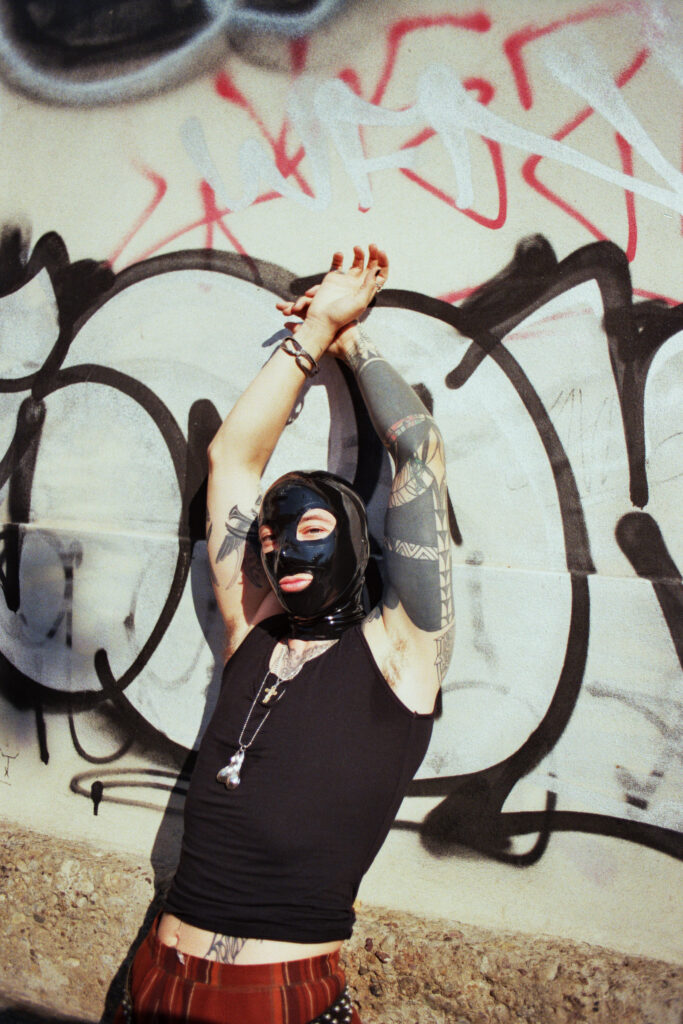
BA: You’ve made a collection of candle holders and vases as well. I think what’s interesting also about the candle holders is the motif of the thorns or spikes, of making something that’s traditionally very ornate with very delicate motifs, like flowers and cherubs, and imbuing that with a more aggressive ethos.
SR: Well, the spikes were created [because], basically, in Glasgow, there’s this gothic style of fences that all break, and they’re all like Charles Macintosh, roses entwined with thorns, et cetera. And these kind of fences were installed to keep intruders out. So the reason why they’re on the candelabras is because these candelabras, when you light them with different colours of candles, you’re supposed to put intention out there. And my intention at the time was to protect the trans community of all the governmental issues in the UK facing healthcare, et cetera.
BA: You also said that you didn’t ever go through any sort of institution for art, how did you find yourself getting into arts in general, but also ceramics specifically as a medium?
SR: I think I first tried a [wheel] throwing course in 2016-17, and I really enjoyed it, but I took a long time in between that because I was studying science at university.
BA: Oh, cool. What type of science?
SR: Biological, chemical sciences. And then covid struck, so I didn’t want to study through Skype and just started with a bag of clay and was making weird gay shit. Little drawings on clay, giving them to friends and then my friends, we should sell them. That’s kind of how it started. And now I guess I’m trying to be more stable and making things, collaborating with people, getting more experience researching.
BA: Do you think that biology has sort of influenced your work in any way?
SR: Think more chemistry than biology. There’s chemistry and glazing and before I moved to Venice, I was just experimenting with the studio mate that I had to cook our own glazes. But I never fully got there because I left.
BA: Yeah, you mentioned you were in Berlin, you went what, Glasgow, Berlin, Venice, or how was the move and what made you go through all these different places?
SR: I just guess feeling stuck in a city. I think Venice is probably the most inspiring place yet with all the neogothic Arabic architecture. I’ve just not had a studio there, so I’ve not been able to produce. But last week I finally found one, so next month I’ll definitely be back in the studio making again. It’s been two years since I’ve not actually had anywhere to make anything, so it’s more just ideas I’m waiting to make. Right now, I’m just inspired by bugs and churches, and – what you call them? – the little Madonna things. But there’s a whole two project books ready to go.
BA: Do you want to get into ’em a little bit?
SR: Yeah, sure. So, I’ve been spending a lot of time in Venice recovering from an aggression and also top surgery, so it’s been a year and a half of just eating salami, getting fat, sitting in the park, smoking joints.
BA: Living that Tony Soprano life.
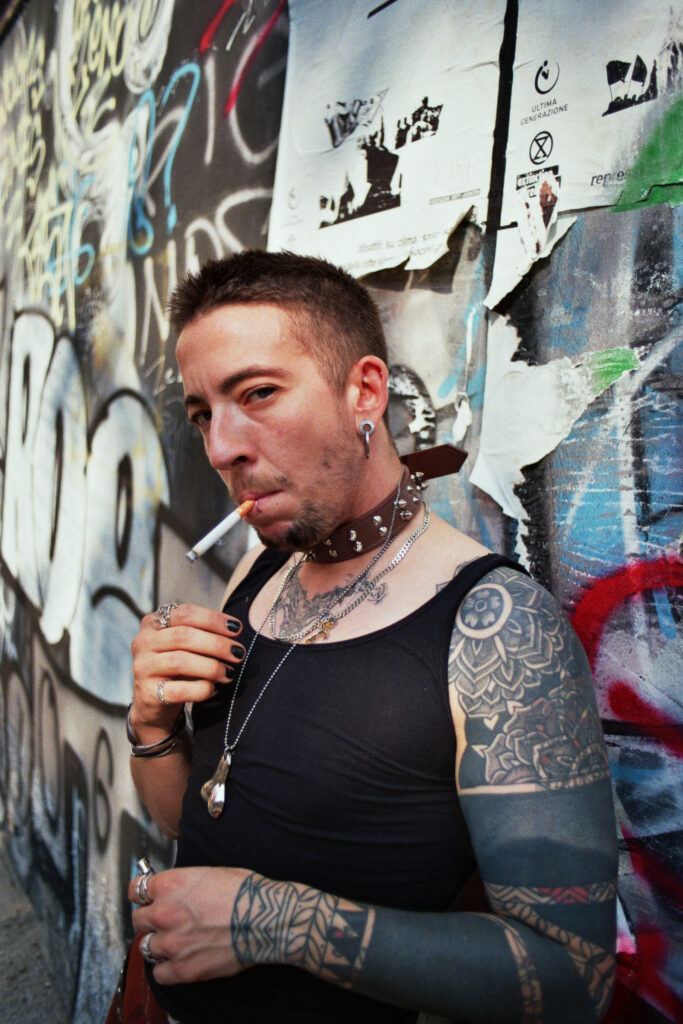
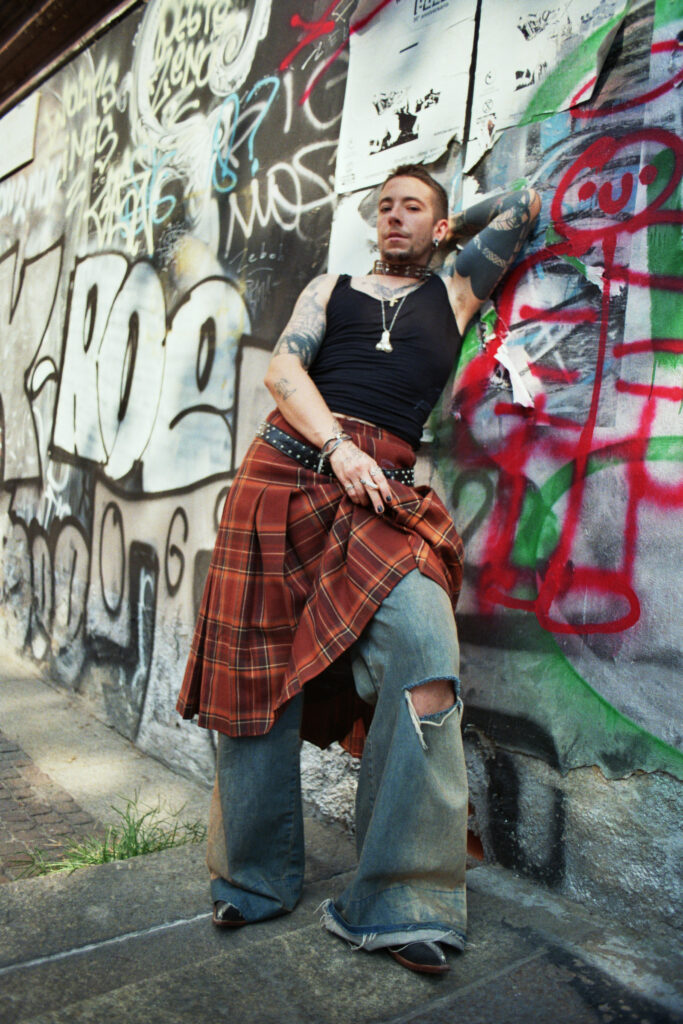
SR: Exactly. Totally crazy. I was in Venice and I was just seeing all these weird little cicada shells on the trees and I was like, what the fuck is this? It looks super creepy. I’ve never seen this bug in my life and they’re everywhere. And I decided to just take a massive black bag and take all the shells, all these little exoskeletons to make something out of them. I just started picking up bugs that were perfectly intact and dead. So, I kept them and I did some research on cicadas and I think I feel quite similar to cicada at times. They’re lifecycle, especially.
BA: There’s a really great haiku, I think by Basho that’s “nothing in the cry of cicadas suggests it’s about to die”, which I think is such a profound haiku. Whenever a summer comes around, I think about that.
SR: Well, once it’s crying, it’s actually at its climax.
BA: Yeah.
SR: But basically, I researched and found out that cicadas spend 17 years of their life underground so that they miss these peeking predators. So, if they come up after three years, they’re going to be basically almost extinct. The same with six. And it keeps going on. And when they come up, they find a safe tree to shed their exoskeleton and then they join the rest of their colony. And they all reach this climax together, protecting each other while they try to grow and shed their skin. And I really found this quite representative of the trans community when people are going through top surgery or the trans community constantly supporting each other. So that is a project I am going to try and work on soon by creating this nest, this massive, if you’re going to cave, I dunno what you call them…
BA: Stalagmites?
SR: Yes, stalagmites. I want to make all of these with natural clay and kind of grotesque looking, and suspend this cicada-like human being in the middle with some latex dripping off the bodies, a foot shedding and boobs, breasts.
BA: You mentioned something in there about the trans community working together to protect each other. How do you think that the importance of this intracommunity support system plays a role for you both personally and within your practice as well?
SR: I think first of all, it’s survival and I think it’s also a gift of exchange. People in the trans community, the majority of people I know, are artists or are working in arts. So there was a constant exchange of someone donating something to benefit someone else. And I think I’ll always continue to give with my work. Right now, I’m in the middle of applying for funding in Glasgow for this other project of this transmission. Well, I want to create a – well – multiple different walls about 30 cm high and place them in local queer bars, cafes, et cetera, where people can just donate some change or some coins, whatever they’ve got. And the money gets collected at the end of day and then every month it gets distributed into different people’s funds.
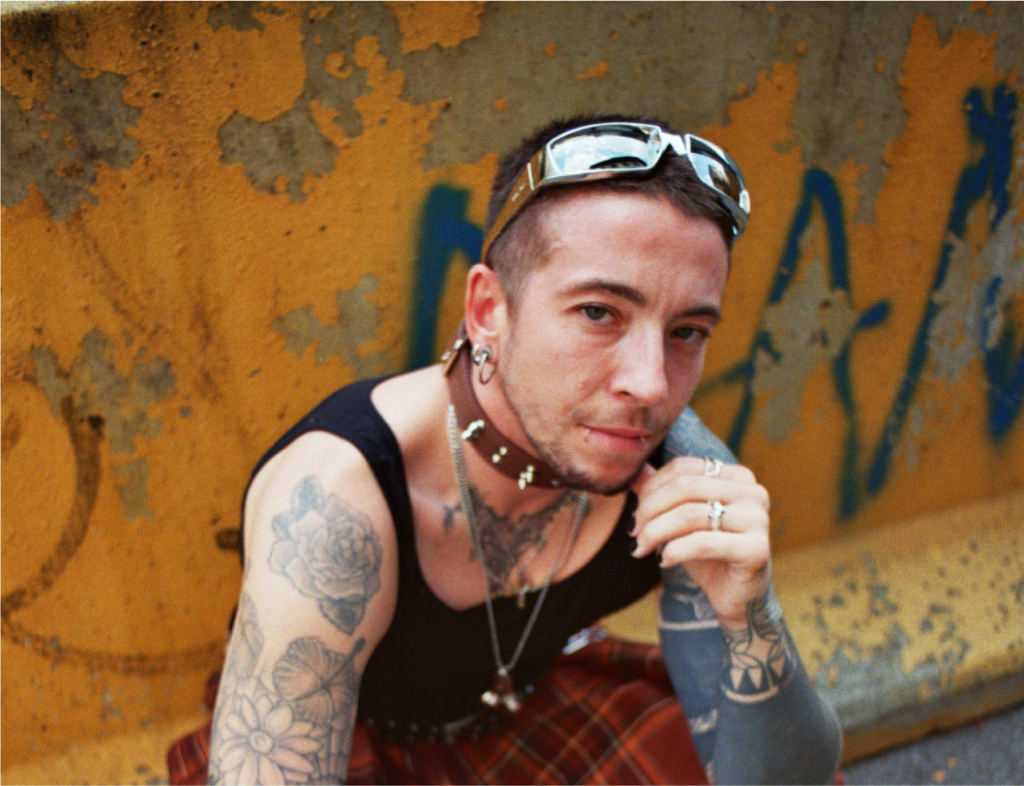
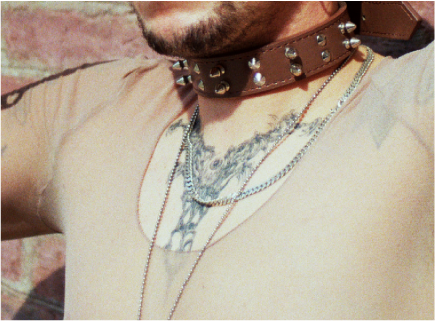
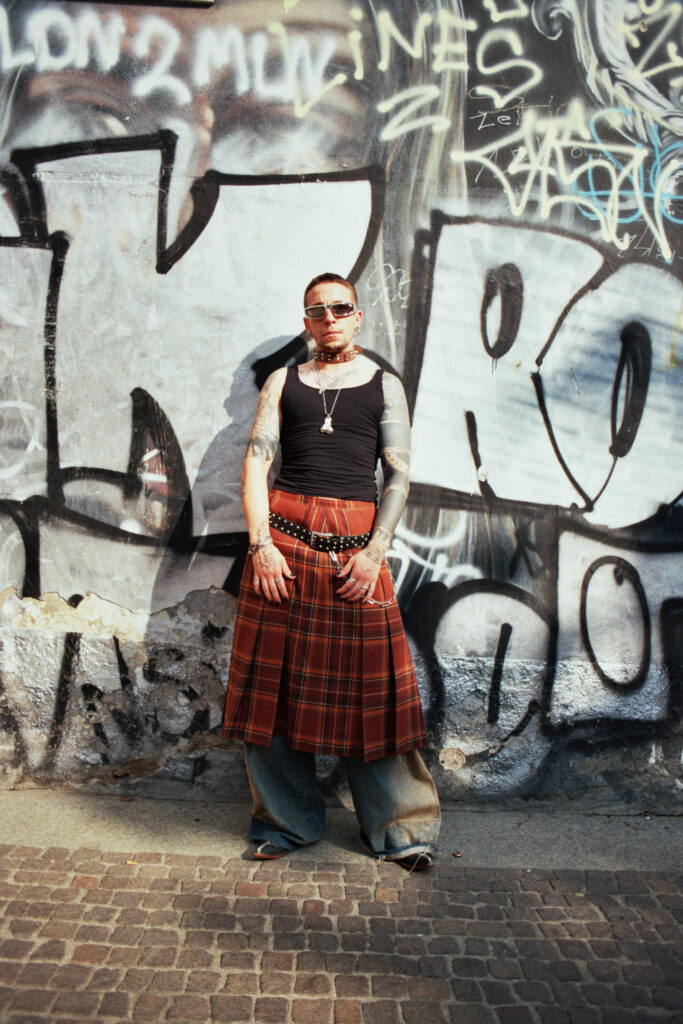
BA: I think that there is a really beautiful impulse within queer communities to have that sort of idea of self-sustaining within the community, especially with the precarity many trans and queer people are prone to.
SR: You have to, unfortunately. It’s like a skip straight past everything: straight to survival mode. Life or death. I think it’s a bond that’s stronger than blood and it never breaks. After you meet someone online or you introduced to someone through Instagram, you’re like, instantly I love you. You are amazing.
BA: Yeah. It’s like blood is thicker than water was synthetic testosterone thicker than blood.
SR: Literally. Exactly. Testosterone is thicker than blood, estrogen as well. A lot of trans people don’t go to their families and they turn to the community. So I guess that’s why it’s so tight in the bond, so deeply embedded.
BA: Speaking about your fundraising efforts, let’s talk a bit also about the raffle you did to raise funds for trans people.
SR: All the artists that contributed different prizes, there was a massive variety of different things. We managed to raise £1,200, which is a massive amount of money. Could keep someone going on testosterone for at least a few years or can pay a 10 for someone’s transition fees. So I really want to make this, I dunno, build something where artists of the queer community donate something every month, whatever they want. Different artists, the same artists, anyone can enter, reenter and to buy a ticket for maybe, I dunno, £3 this time instead of £10. So that there’s more people that are capable to buy it. And I guess if it’s cheaper, more people will buy it. Just distributed every month because people are suffering a lot, waiting for too long. So I want to help as much as I can.
BA: Thank you. Do you have any concluding thoughts?
SR: I’m just saying that I’ve been on a massive break. Okay? Massive break, and now I’m ready to blow everyone’s mind. Everything’s coming.
BA: Yeah.
SR: Dude. It’s coming.
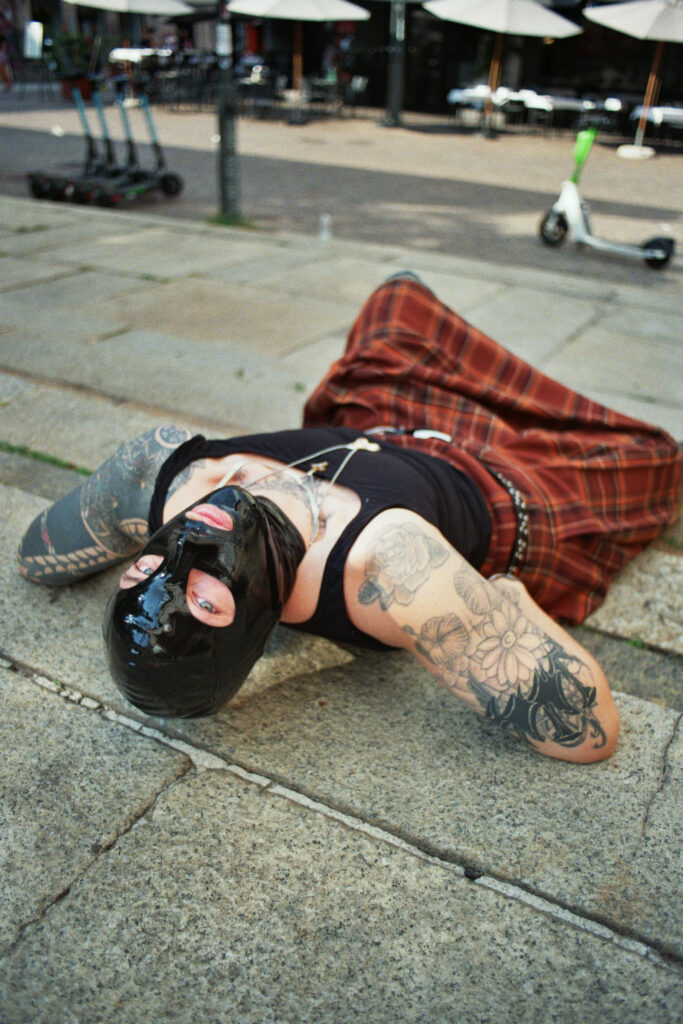
Sunday Russell in conversation with Bernardo Alves
Photographer: Arianna Beretta @seu_photine
Stylist: Giu Zurlo @bbydickcheney
Style Credits: Skirt, pants and belt are Skué @skue_morphism
Talent: Sunday Russell @g4ycl4y




